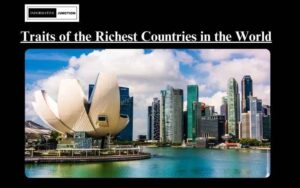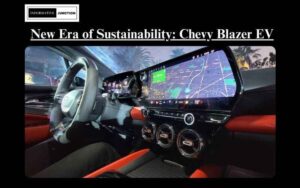Introduction: A Journey into the Enchanting World of Animation
Animation is a captivating art form that has the power to transport audiences to fantastical realms, bring characters to life, and evoke a wide range of emotions. Whether it’s the endearing charm of hand-drawn classics or the stunning realism of cutting-edge CGI, animation has been an integral part of our lives, enchanting both children and adults alike. In this blog, we embark on a journey to explore the mesmerizing magic of animation, peeling back the layers to reveal the artistry and technology that make visual storytelling come alive.
1. A Brief History of Animation: From Humble Beginnings to Cinematic Excellence
- Early Animation: From Zoetropes to Flipbooks – This section traces the origins of animation, from the early experiments with moving images, such as zoetropes and flipbooks, to the pioneering work of animation pioneers like Émile Cohl and Winsor McCay.
- The Era of Animation Brilliance: Walt Disney and More – This section delves into the groundbreaking influence of Walt Disney’s innovations, such as the introduction of Mickey Mouse and the trailblazing creation of “Snow White and the Seven Dwarfs,” the first-ever full-length animated feature film. This period also marked the rise of other prominent animation studios like Warner Bros. and MGM, known for their iconic characters such as Bugs Bunny and Tom and Jerry.
- The Digital Revolution: CGI and 3D Animation – As technology advanced, CGI and 3D animation became dominant forces, transforming the animation landscape with movies like “Toy Story” and “Shrek.” This section delves into how computer-generated animation brought a new level of realism and creativity to the industry.
2. The Art of Animation: From Concept to Creation
- Character Design and Development – In this part, we dive into the artistry of character design, exploring how animators breathe life into characters through unique traits, personalities, and backstories.
- Storyboarding and Pre-Visualization – Before animation begins, storyboarding plays a crucial role in visualizing the narrative. We’ll explore how storyboards act as blueprints for animators and directors to plan the sequence of scenes.
- The Animation Process: From Pencil to Pixel – This section unveils the various animation techniques, from traditional hand-drawn animation to digital puppetry and motion capture, revealing how animators animate characters frame by frame.
3. Technology at the Heart of Animation: Powering Imagination and Creativity
Digital Animation Software – Advanced software such as Autodesk Maya, Adobe After Effects, and Pixar’s RenderMan has brought a revolutionary transformation to the world of animation. In our discussion, we will explore how these sophisticated tools enable animators to create awe-inspiring visuals and enhance the efficiency of the production process.
- Advancements in Rendering and Lighting – Rendering and lighting are essential elements in creating realistic animations. This part explores how advancements in rendering engines and lighting technology have elevated the visual quality of animated films and series.
4. Animation in Film: Shaping the Course of Cinematic History
- Animated Masterpieces that Defined Cinema – From “The Lion King” to “Spirited Away,” this section celebrates iconic animated movies that have left an indelible mark on cinema, garnering critical acclaim and captivating audiences worldwide.
Animation as a Versatile Genre – Animation transcends the realm of family-centric narratives and ventures into a wide spectrum of genres, ranging from heartwarming dramas like “Up” to intellectually stimulating science fiction like “Ghost in the Shell.” Through this exploration, we aim to reveal how animation breaks free from traditional genre boundaries, defying expectations and expanding its creative horizons.
conventional genre limitations.
5. The Psychology of Animation: Connecting Emotionally with Audiences
- The Power of Emotional Resonance – Animated characters often create deep emotional connections with audiences. This part explores how animators craft relatable characters and poignant stories that evoke empathy and emotional engagement.
- Animated Therapy: Healing Through Cartoons – Animation has found applications beyond entertainment. We’ll discuss how animation is used in therapeutic settings to help children and adults cope with emotional and psychological challenges.
6. Beyond Entertainment: Animation’s Impact on Education and Learning
- Educational Animation in Early Childhood Development – Animated content has become a valuable tool in early childhood education. We’ll explore how educational animation enhances learning experiences and fosters cognitive development in young learners.
- Animation in Science and Medicine Education – Animation serves as a powerful medium for simplifying complex scientific concepts and medical procedures. This section discusses how animated visuals aid in science and medical education.
7. Animation’s Cross-Cultural Appeal: Bridging Boundaries and Celebrating Diversity
- Cultural Representation in Animated Films – Animated films from various cultures showcase diverse perspectives and narratives. We’ll discuss how these movies contribute to cultural representation and understanding on a global scale.
- International Collaborations in Animation – Animation studios collaborate across borders, resulting in unique and culturally rich productions. We’ll explore how these collaborations celebrate cultural diversity and foster creativity.
8. Animation in Advertising and Marketing: Captivating Audiences and Building Brands
- Animated Advertisements: Engaging Audiences Creatively – Animated commercials stand out for their creativity and storytelling prowess. We’ll showcase notable animated advertisements that have captured audience attention and become marketing successes.
- Branding through Animated Mascots and Characters – Iconic animated mascots and characters have become synonymous with brands. This section explores how these animated brand ambassadors leave a lasting impression on consumers.
9. The Future of Animation: Exploring Emerging Trends and Technologies
- Virtual Reality (VR) Animation: Immersive Experiences – VR animation is an exciting frontier that immerses viewers in interactive and immersive worlds. We’ll discuss the potential of VR in reshaping animated storytelling.
- Real-Time Animation and Interactivity – Real-time animation allows for dynamic and interactive storytelling experiences. We’ll explore how this technology is changing the landscape of animation in gaming and interactive media.
Conclusion: The Enduring Enchantment of Animation
The magic of animation continues to captivate and inspire, bridging the gap between imagination and reality. From the nostalgic charm of hand-drawn classics to the awe-inspiring visual effects of modern CGI, animation’s artistry and technology blend seamlessly to transport audiences to worlds beyond their wildest dreams. As we uncover the art and technology behind visual storytelling, we celebrate the enduring enchantment of animation and the boundless possibilities it holds for the future. From its humble beginnings to its extraordinary evolution, animation remains a timeless testament to the power of creativity and innovation, forever entwined with our collective imagination and cherished memories. So, as the screens come alive with animated wonders, let us embrace the magic of animation and be swept away by the captivating tales that await us, for the world of animation is a realm of infinite possibilities where dreams take flight and imagination knows no bounds.
Connect with Informative Junction
Click Here if you want to read more Interesting Blogs.




